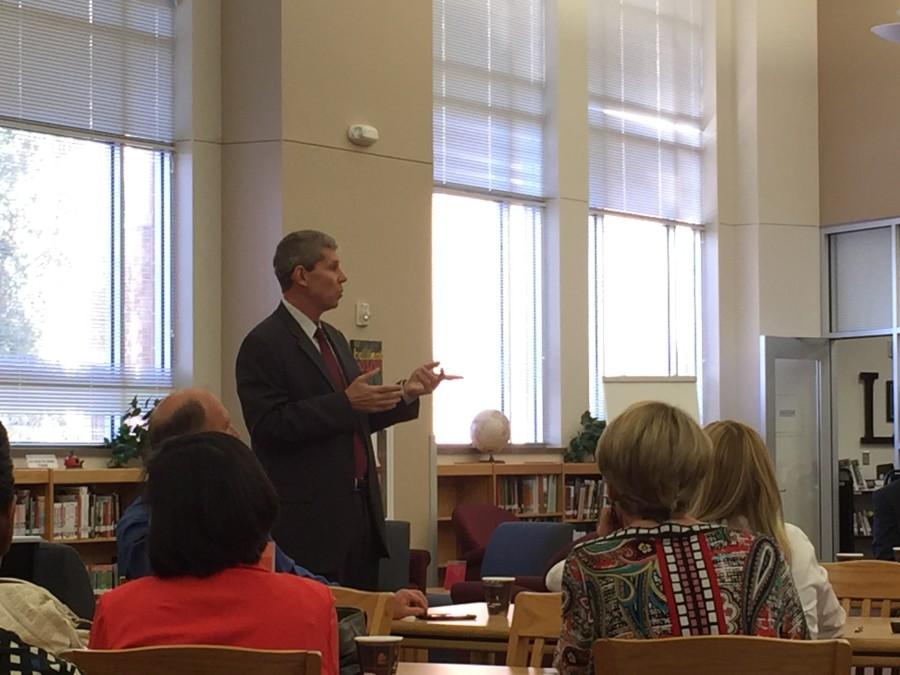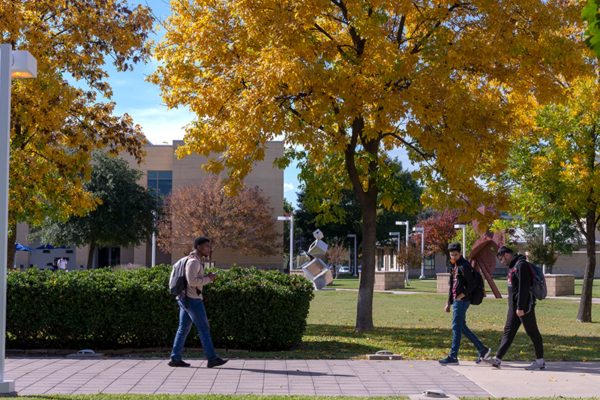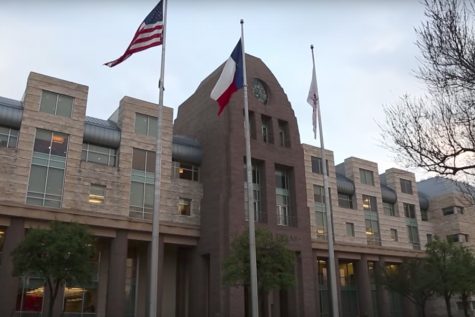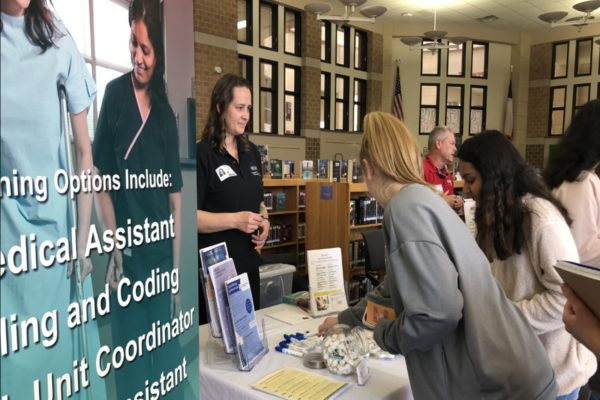Parents sit down with Lyon for first Coffee Talk
The series of informal talks gives parents the chance to ask questions of FISD leaders
Superintendent Lyon visited the school on Thursday to answer questions from parents about the district. Topics included class sizes, hiring teachers, and AP success rates.
Superintendent Jeremy Lyon came to the school Thursday morning to hold a Coffee Talk, a forum in which parents can ask questions about the district and have a conversation with Lyon and his assistant superintendent on subjects like class sizes, hiring teachers, and Advanced Placement results.

“Out of all the ways we have to communicate, email, board meetings, public forums, phone calls, whatever it is, we are still constantly looking for opportunities to talk about issues and answer questions,” Lyon said.
A good portion of the parents in attendance have elementary age children from across the district. Because of growth in the district that has resulted in building 59 schools in the last 20 years, there are some concerns regarding numbers of students in FISD schools. The first question asked by parents in attendance, referred to a common concern of rising class sizes in schools.
The standard in the state of Texas is currently a 22:1 student to teacher ratio in classrooms but Lyon explained that the district has applied for waivers that allow a higher student to teacher ratio for Frisco schools. These waivers allow Frisco to staff according to a 22:1 ratio for kindergarten, 25:1 for grades 1 through 4, and 28:1 for fifth grade.
“Let’s say we want to reduce class sizes by one in one grade across the district, it would probably take half a million dollars to do that,” Lyon said. “
”Frisco ISD has a $400 million annual operating budget with that money applied towards running the schools and employing teachers. 80 percent of the $400 million goes toward staffing, and 50 percent of that allotted budget is reserved for employing teachers. In the face of a select few parents becoming somewhat combative with questions about class sizes, Dr. Lyon explained how the last state legislative session lessened Frisco’s allotted budget.
“The staffing model in elementary and middle school acknowledges the budget we get from Austin. We on the board, we advocated for Frisco ISD funding and resources mightily,” Lyon said. “Frisco ISD lost $168 per student in this school district. We have over 50,000 students, and we were one of the big losers this legislative session.”
After the class size discussion, Dr. Lyon moved the discussion towards online learning opportunities and the increase in Advanced Placement participation and scores in the last year. The district saw a 35 percent increase in AP scholars and a 20 percent increase in students taking AP classes for the 2014-2015 school year.
“We have a whole bandwidth of students who are capable of taking AP classes, who weren’t taking AP classes,” Lyon said. “We wanted to look at why that was.”
Lyon also revealed the district’s plan to research introducing an International Baccalaureate program. Districts in close proximity to Frisco, like Allen ISD and Plano ISD, offer IB classes to their students.
“We’re spending this year looking at models in order to size up how this would look in schools,” Lyon said. “We’re very intent on implementing this program, but we need to look at the resources and the cost.”

Sarah Philips is a senior and highly involved in the school. She has competed in UIL Journalism all four years of high school, and placed fifth in News...

Henry Youtt is a senior and enjoys staying busy with whatever he may be doing. He’s the Vice President of National Honor Society and works as a promotional...

Maddie Owens is a junior and loves editing videos, and has been actively involved in broadcast since freshman year. She has also taken the role of Wingspan’s...








